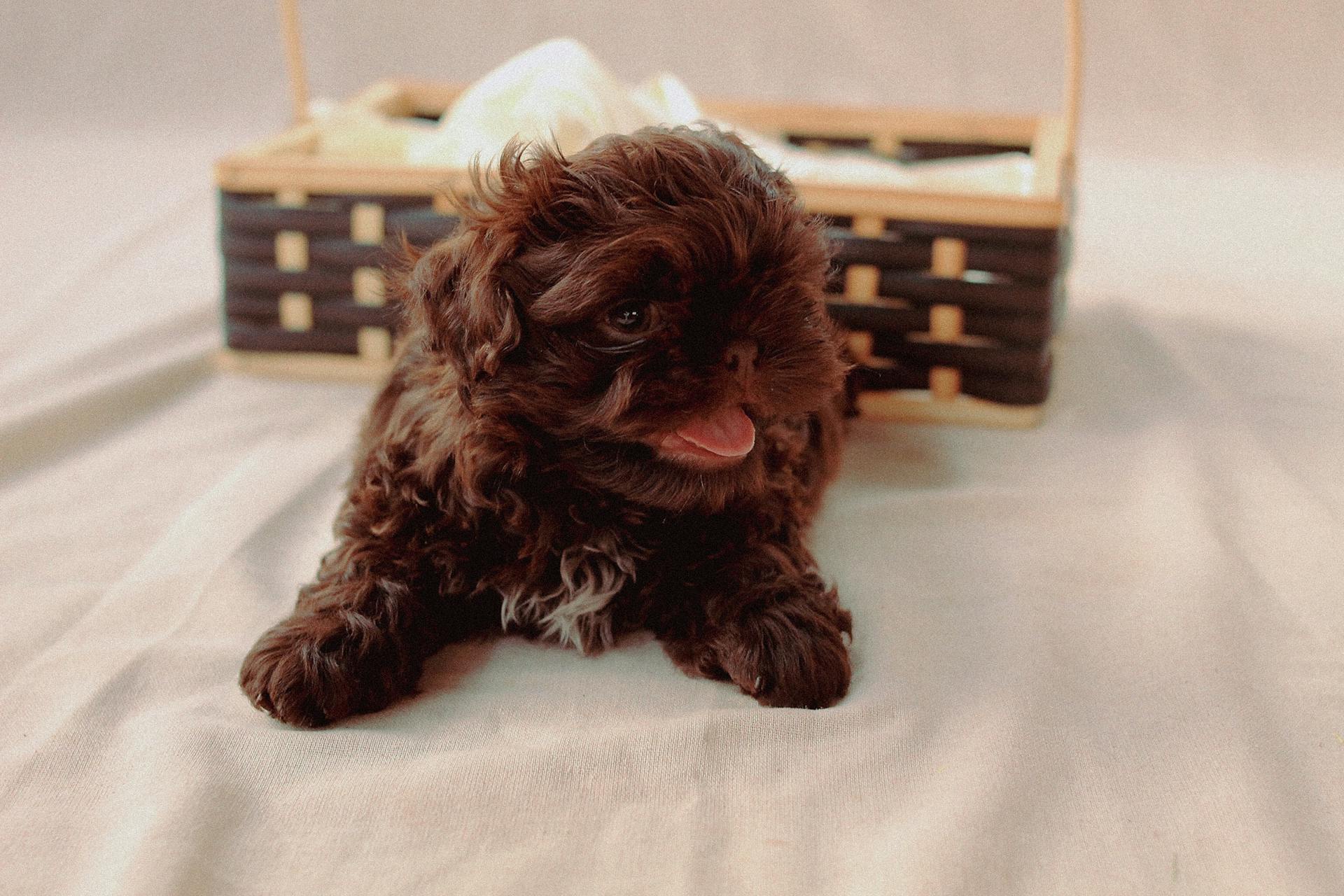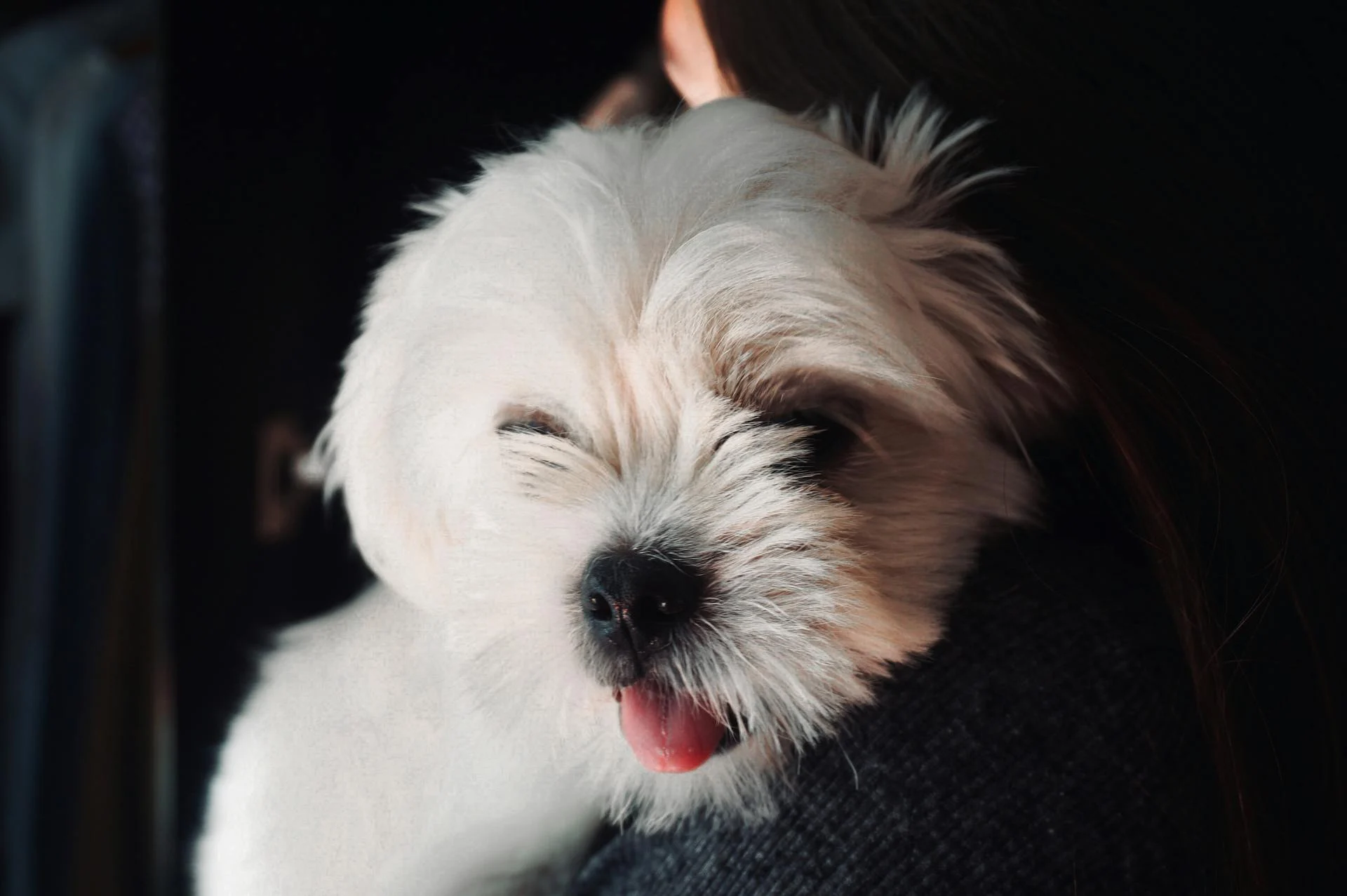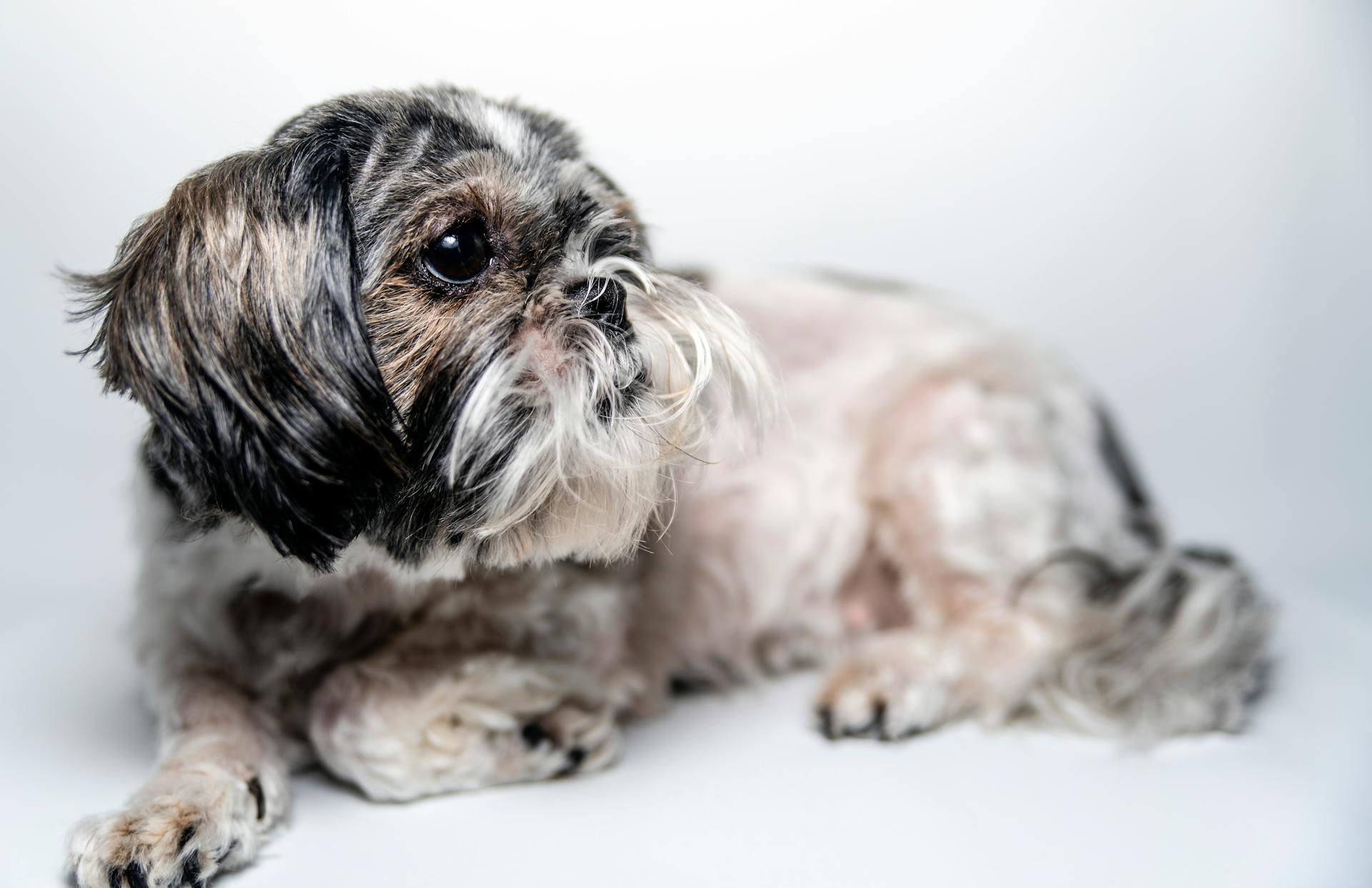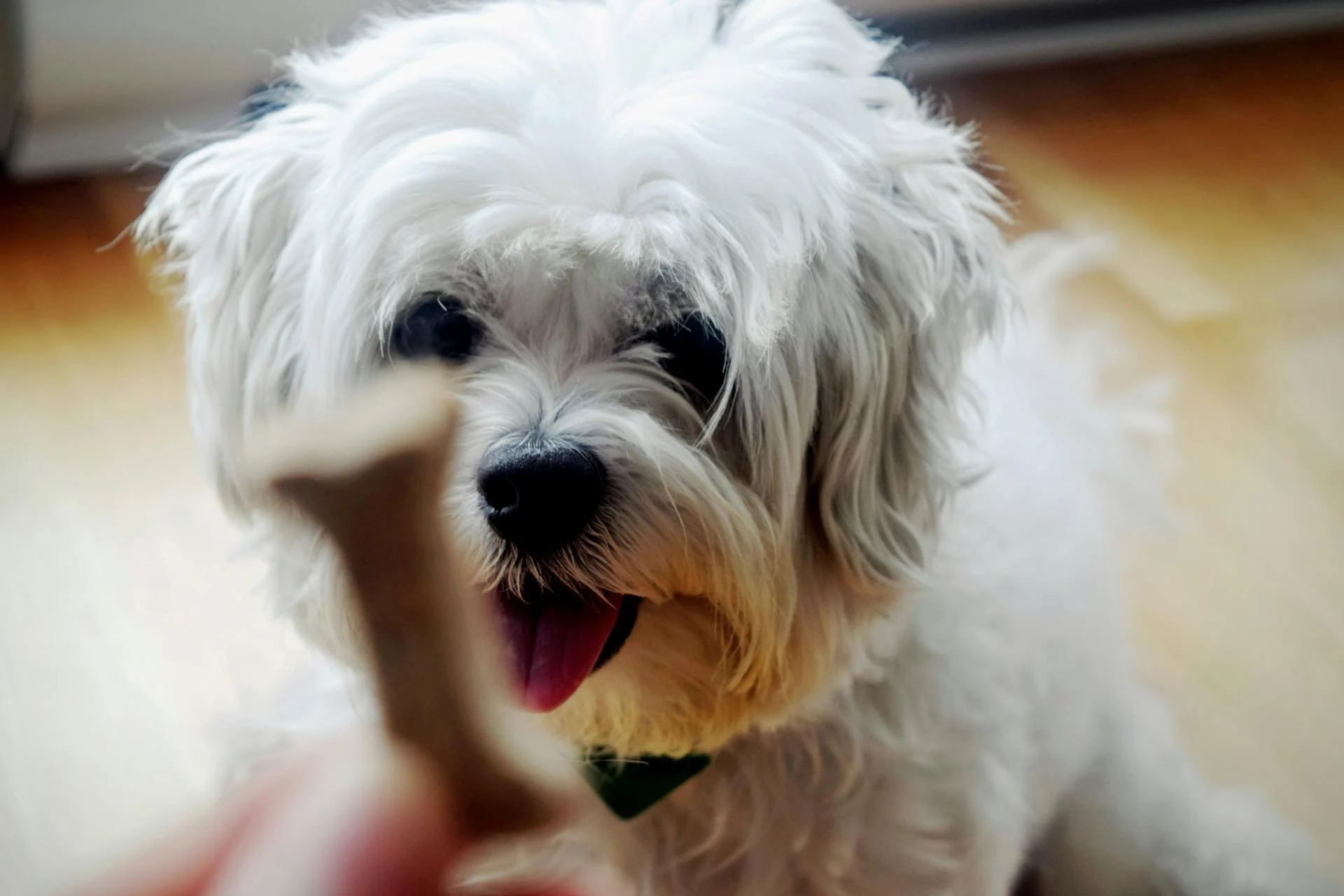
The Shih Tzu standard is a crucial aspect to consider for prospective owners. This breed originated in Tibet and was later bred in China as a palace dog.
Their small size, typically weighing between 9-16 pounds, makes them a great companion for city living. They have a long, flowing coat that requires regular grooming to prevent matting and tangling.
Shih Tzus are known for their friendly and outgoing personalities, which make them excellent family pets. With proper training and socialization, they can thrive in a variety of living situations.
Breed Standard
The Shih Tzu breed standard is all about proportions. Their front legs, or forequarters, should be straight, neither too short nor too long.
The head is a big deal in the Shih Tzu breed standard. It's big and round, set high on the neck with a face that looks forward or up.
A well-proportioned Shih Tzu has a muscular hindquarters to balance out their straight front legs. The neck and body are also important, and should not be exaggerated in size or shape.
Their eyes are large and face forward, adding to their adorable expression. The shoulders of the American type of Shih Tzu are frontal, which is a key characteristic of the breed.
Consider reading: Straight Back German Shepherds
Head and Skull
The head and skull of a Shih Tzu are truly distinctive features. The head is broad and round, with a width between the eyes that's quite impressive.
The muzzle is square, short, and flat, with a hairy texture that's quite endearing. The nose is black, but in liver or liver-marked dogs, it's a dark liver color. It's about an inch from the tip to the definite stop.
The top of the nose leather should be on a line with or slightly below the lower eye rim, ensuring the dog's nose is perfectly proportioned. Wide-open nostrils are a must, as pinched nostrils are highly undesirable.
Here are some key characteristics of the Shih Tzu's head and skull:
The overall effect of the Shih Tzu's head and skull is truly unique, with the hair growing upwards on the muzzle giving a "chrysanthemum-like" effect that's quite charming.
Forequarters
The forequarters of the breed are a key aspect of its overall structure. Shoulders should be well laid back, creating a balanced look.
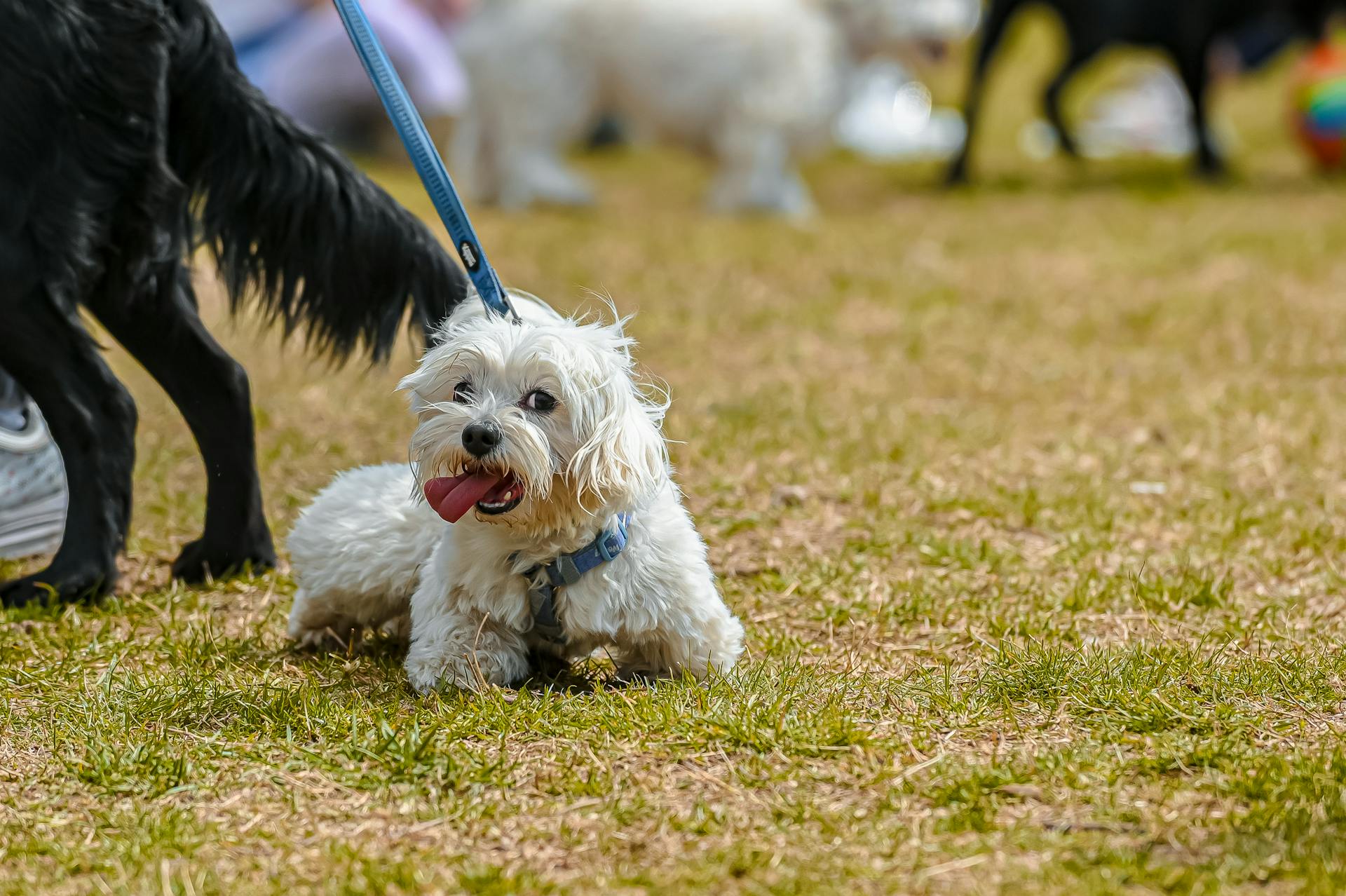
Legs are relatively short but muscular, with a good amount of bone density. This is consistent with the breed's broad chest, which should be well let down.
Overall, the goal is to achieve straight legs while still allowing for a broad chest. This can be a challenging balance to strike, but it's essential for the breed's overall appearance.
Health and Care
Shih Tzus can be prone to hereditary health issues, some of which can be present from a fairly early age. Their popularity has led to poor breeding, resulting in lifelong diseases.
Because of their high intelligence, Shih Tzus are relatively easy to care for, requiring only a few important care requirements.
Consider reading: Shih Tzu Good with Kids
Health
Shih Tzus are generally healthy dogs, but they can be prone to certain health issues. Some of these issues can be hereditary, while others can be caused by poor breeding practices.
Responsible breeders strive to maintain the highest breed standards, which can help reduce the risk of these health issues. However, even with good breeding, Shih Tzus can still develop health problems.
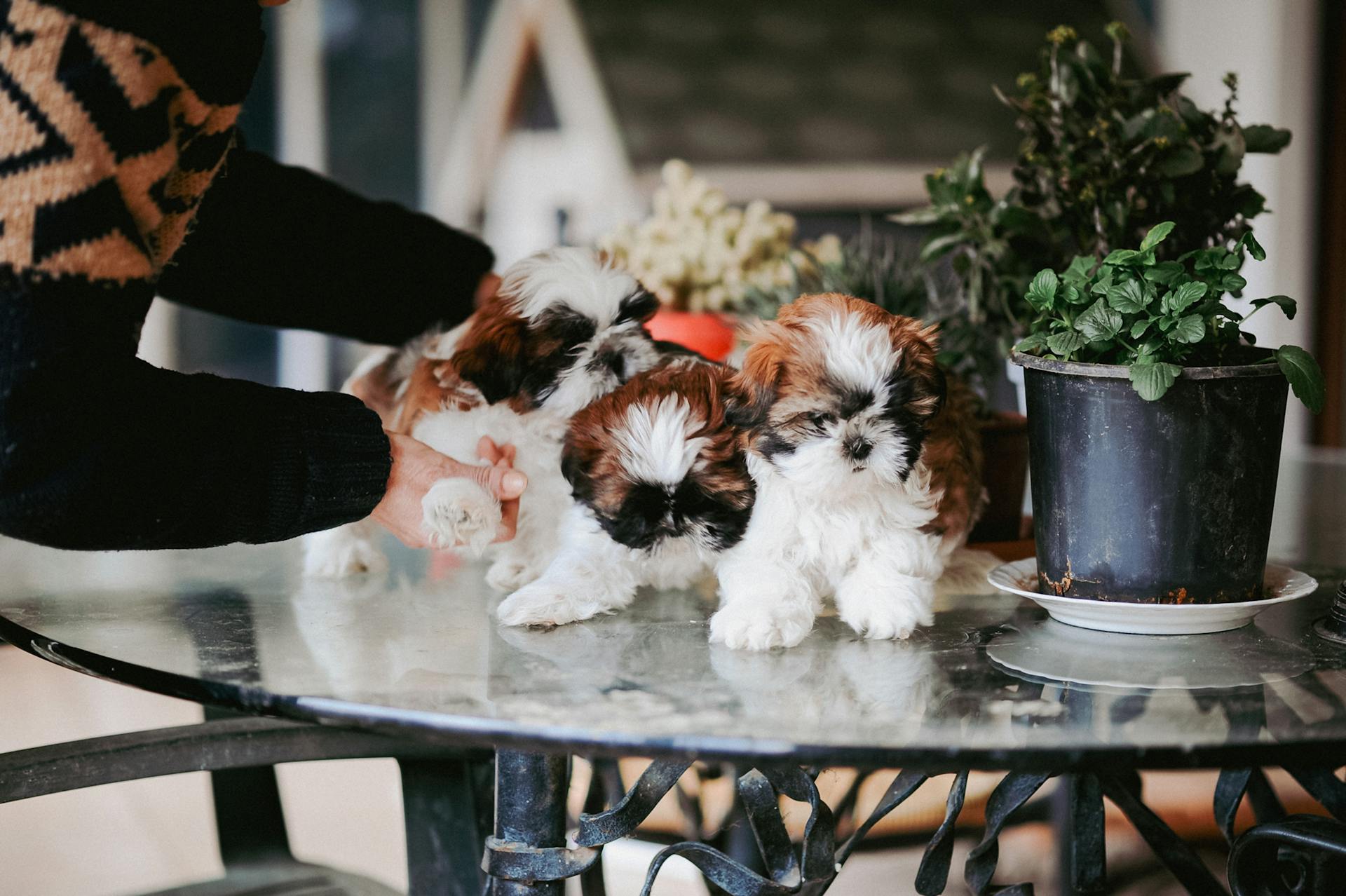
Brachycephalic syndrome is a common health issue in Shih Tzus, caused by abnormal airway anatomy. This can lead to difficulties breathing, snoring, and nasal discharge.
Hip dysplasia is another common health issue in Shih Tzus, where the hip joint fails to develop correctly, causing pain and an unsteady gait.
Here are some common health problems in Shih Tzus:
- Brachycephalic syndrome
- Hip dysplasia
- Patellar luxation
- Intervertebral disc disease
- Keratoconjunctivitis sicca (dry eyes)
- Distichiasis (abnormal hair growth on the eyelids)
Eye issues are also common in Shih Tzus, and can be caused by a variety of factors, including allergies and the formation of epiphora (excessive tear production). This can lead to tear stains around the eyes and potentially cause blindness if left untreated.
Shih Tzus are also prone to cataracts, which can be corrected with surgery. However, if left untreated, the dog may become blind in the affected eye.
Readers also liked: Tear Stains in Maltese Dogs
Diet and Nutrition
A shih tzu's diet is crucial for their overall health, and as a small dog, they need only up to 1 cup of dry dog food per day.
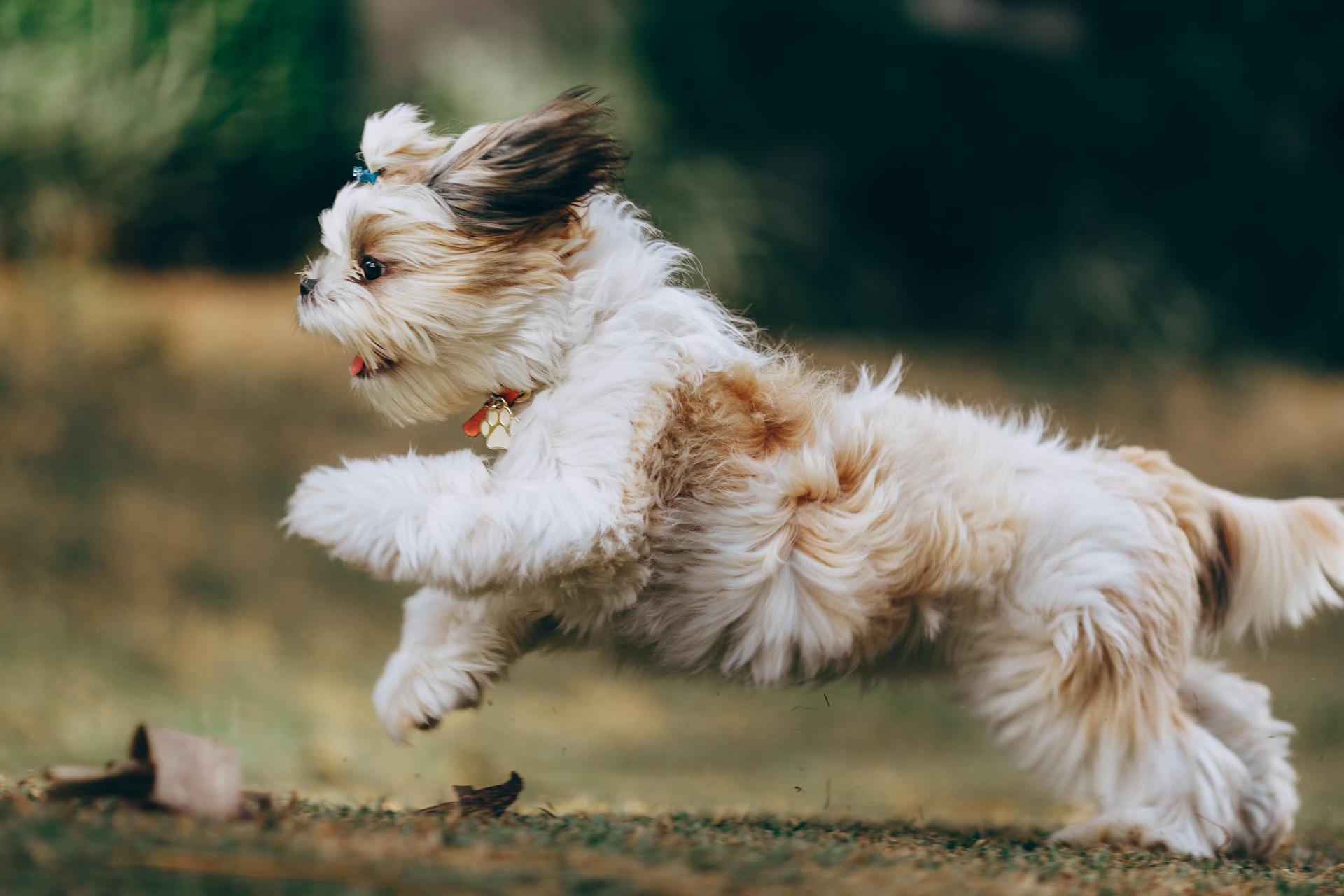
The exact amount depends on the dog's age, activity level, size, and health, so it's essential to monitor their weight and adjust their food intake accordingly.
Feeding your shih tzu too much can lead to weight gain, so be sure to discuss the appropriate nutritional strategy with your veterinarian to get personalized recommendations.
It's also important to note that a shih tzu's nutritional needs change as they age, so regular check-ins with your vet will help ensure they're getting the right balance of nutrients.
See what others are reading: Shih Tzu Dog Age
Exercise
Exercise is essential for your shih tzu's physical and mental well-being. They need daily walks and fun games to stay stimulated.
Daily exercise sessions of about 45 minutes per day are a great starting point. This can be broken up into shorter periods if your dog gets tired easily.
Shih tzus adapt well to apartment living, as long as you provide them with enough time for active play.
On a similar theme: Dogs Breeds That Start with B
Care

Taking care of a Shih Tzu is relatively easy, but it does require some time and effort.
They're not high-maintenance dogs, but they're not low maintenance either.
Shih Tzus need regular training to become well-behaved and obedient.
By keeping their care requirements in mind, you can ensure a happy and healthy dog for years to come.
Their petite size means they need plenty of love and attention to stay happy and content.
Here's an interesting read: Low Maintenance Dogs Hypoallergenic
Frequently Asked Questions
How big is a standard Shih Tzu?
A standard Shih Tzu typically weighs between 9-16 pounds and stands 9-11 inches tall.
What is the difference between standard and imperial Shih Tzu?
There is no official difference between a standard and imperial Shih Tzu, as the term 'Imperial' is often used to mislead or describe a smaller-than-average Shih Tzu
Featured Images: pexels.com
